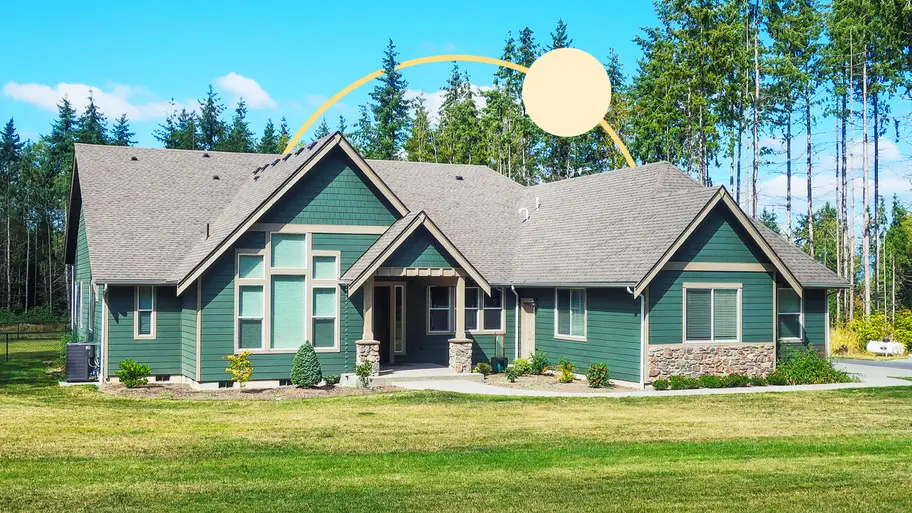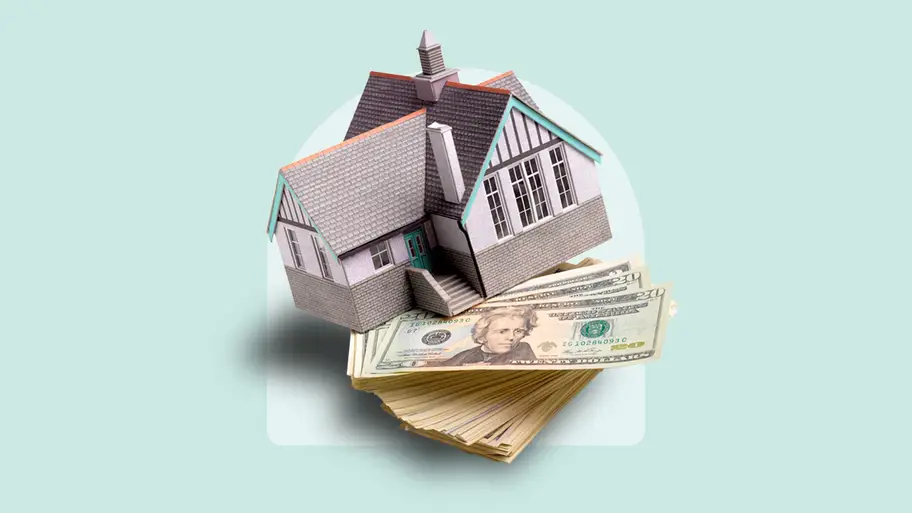Enter your details
Answer some questions about your home equity needs to help us find the right lenders for you.
 Written by
Written by
Answer some questions about your home equity needs to help us find the right lenders for you.
See competitive home equity rates from lenders that match your criteria and compare your offers side by side.
After selecting your top options, connect with lenders online or by phone. Next, choose a lender, finalize your details and lock your rate in.
| LOAN TYPE | AVERAGE RATE | AVERAGE RATE RANGE |
|---|---|---|
| 5-year home equity loan | 8.25% | 5.49% - 10.37% |
| 10-year home equity loan | 8.41% | 6.63% - 10.37% |
| 15-year home equity loan | 8.34% | 6.63% - 10.47% |
To conduct the National Average survey, Bankrate obtains rate information from the 10 largest banks and thrifts in 10 large U.S. markets. The rates shown above are calculated using a loan or line amount of $30,000, with a FICO score of 700 and a combined loan-to-value ratio of 80 percent.
Note: The above APRs are current as of July 30, 2025. The exact APR you might qualify for depends on your credit score and other factors, such as whether you're an existing customer or enroll in auto-payments.
Home equity loan rates saw little movement this week, as the Federal Reserve held its key interest rate steady. The average rates on the $30,000 5- and 15-year loans were unchanged this week, at 8.25 percent and 8.34 percent, respectively, according to Bankrate’s survey of lenders. Meanwhile, the comparable 10-year loan inched up slightly, rising one basis point to 8.41 percent.
Unlike HELOCs, home equity loan interest rates are fixed. Once you close your loan, your rate will stay the same whether market rates rise or fall (unless you refinance). However, interest rates on new home equity loans do shift in response to economic conditions and influences, including the Fed’s monetary policy.
At its latest meeting July 29 and 30, the Fed held interest rates as-is for the fifth time in a row. Defying pressure from President Trump to lower rates, Fed Chair Jerome Powell says the central bank is continuing to keep a close eye on how tariffs impact the economy.
For homeowners planning to finance a major expense, like renovations, choosing the right home equity product depends on both your financial goals and the interest rate environment.
"A home equity loan might be a good borrowing option when interest rates aren’t expected to fall, but your existing mortgage rate is lower than the current rates on home equity loans or lines of credit,” says Stephen Kates, financial analyst at Bankrate. “These conditions would preclude a cash-out refinance.”
| LOAN TYPE | LOAN AMOUNT | LOAN TERM | STARTING APR |
|---|---|---|---|
| $10,000–$250,000 | 10 to 20 years | 6.75% | |
| $10,000–$300,000 | 5, 10 years | 6.79% | |
| $10,000 - $500,000 | 10-30 years | 6.99% | |
| Up to $600,000 | 5 to 20 years | 6.99% | |
| $5,000 minimum | 5 to 15 years | 7.31% | |
| $25,000–$750,000 ($1 million in CA) | Up to 30 years | 7.65% | |
| $10,000 minimum | 5 to 30 years | 7.74% | |
| $25,000–$400,000 | 5 to 20 years | 8.12% |
Note: The above APRs are current as of July 9, 2025. The exact APR you might qualify for depends on your credit score and other factors, such as whether you're an existing customer or enroll in auto-payments.
There are several factors—some personal, some tied to broader economic trends—that affect your home equity loan rate:
Whether you want a competitive interest rate, favorable repayment terms, or minimal fees, finding a home equity loan that meets all of your needs can be challenging. Here are five things to look for when selecting the right loan for you:
When deciding if a home equity loan is the best choice, there are several advantages and disadvantages to consider.
Lower interest rates than those of unsecured debt such as credit cards or personal loans.
High borrowing limits.
Fixed monthly payments.
Lump-sum payouts.
Tax-deductible interest if funds used for home renovations.
Need to own at least 15-20% of home outright.
Longer application/funding timeline.
Potentially expensive closing costs.
Additional lien on home/dilutes home’s worth.
Risk of losing your home if you can’t make payments.
Learn more: Pros and cons of home equity loans
Finding the best interest rate for a home equity loan is important, as even a quarter-point difference can impact your repayments. To demonstrate, here are the amounts you’d owe each month on a $30,000 loan within the current range of rates:
| AVERAGE APR | MONTHLY PAYMENT |
| 8.00% | $608.29 |
| 8.15% | $610.45 |
| 8.30% | $612.61 |
| 8.45% | $614.77 |
| 9.00% | $622.75 |
| 9.15% | $624.94 |
A home equity loan is not the right choice for every borrower. Depending on what you need the money for and the stage in your life, one of these options may be a better fit:
Home equity line of credit (HELOC): Like a big credit card, a HELOC allows you to withdraw money at different times, up to a certain limit. You pay interest only on the withdrawals at a variable rate. Generally speaking, if you’ve got a regularly recurring expense or are planning on doing multiple home improvement projects over an extended period, a HELOC may be the better option for you.
Reverse mortgage: With a reverse mortgage, you receive an advance on your home equity that you don't have to repay until you leave the home. However, these often come with many fees, and variable interest accrues continuously on the money you receive. These are also only available to older homeowners (62 and up for a Home Equity Conversion Mortgage, the most popular reverse mortgage product, or 55 and up for some proprietary reverse mortgages).
Personal loans: Like home equity loans, personal loans have fixed interest rates and disburse money in a lump sum. However, they are unsecured debt: They don’t use your home as collateral. On the downside, they tend to have higher interest rates, their terms are typically shorter, and the amounts are smaller.
Before you start applying for a home equity loan, here are some home equity resources to prepare you for the process:

What is home equity?
Discover what home equity means and how you can tap it to pay for home renovations or pay off debts, and how to get the best rates.

How to calculate your home equity
Follow these steps to calculate how much equity you have in your home and how to tap into it via a home equity loan or line of credit (HELOC).

HELOC and home equity loan requirements
Everything you need to know about HELOC and home equity loan requirements: credit scores, DTI ratios and more.

Where to get a home equity loan: finding the best lender for your needs
Your loan provider makes a difference in the terms, rates, even if you get the loan at all. Here's where to find the best home equity lender.
Written by: Linda Bell, Senior Writer, Home Lending
For more than two decades, I have covered the housing market, including in depth coverage of the 2008 housing market collapse. To increase my knowledge of home equity and HELOCs, I earned a Certified HELOC Specialist designation from the National Association of Mortgage Underwriters (NAMU). Throughout my career, I have won more than two dozen awards, most notably from the National Association of Real Estate Editors (NAREE) and the New York Association of Black Journalists (NYABJ) for an investigative series I produced on minorities and the housing industry.
Edited by: Troy Segal, Senior Editor, Home Lending
As a senior editor on Bankrate’s Home Lending team, I handle coverage of residential real estate, specializing in the finer points of homeownership, home equity and home-based financing. I hold a Certified Mortgage Underwriter designation from the National Association of Mortgage Underwriters. Throughout my career, I’ve also written and edited articles on a variety of personal finance, investment and wealth management topics. I was named one of Fixr.com’s “30 Top Home Improvement Journalists” in 2024.
Reviewed by: Mark Hamrick, Senior Economic Analyst
I am an award-winning business and financial journalist, with decades of experience in the news business. I can often be found on television, radio and in print, where I make complex financial topics easy to understand. I have also helmed two major journalism organizations and am a champion for financial literacy and press freedom around the globe.